A Retro Scavenger Hunt Is Rekindling Road Trips Across America
Can you find the Muffler Man in your state?
For many people, it begins with the first sighting of an enormous man blocking out the sun, sculpted from fiberglass, often holding a muffler or a tool, looming on the side of a road. After road trippers see one, the quest for other such roadside attractions often ignites. The giant who started my own hunt was named Jacques. Towering above the cars driving towards the ferry in Marblehead, Ohio, Jacques is a rescued sculpture that once hawked sandwiches in front of a restaurant. Though he was used to advertise the food service industry, Jacques is a relative of other fiberglass sculptures known as muffler men.
“The muffler man is such an iconic roadside attraction,” says Seth Hardmeyer, an over-the-road truck driver who’s visited hundreds of roadside statues across 37 states since 2006, including 40-50 muffler men. “The allure is that they were once very common, with a population of something like over 2,000 around the country, and now only a handful remain in each state.”
But a smattering of people are dedicated to bringing them back.

Muffler men ruled the roadsides through the early 1960s and ‘70s, in an era when bigger was better. The overblown figures could be found, in particular, along Route 66. The first commissioned muffler man was a giant depiction of Paul Bunyan, wearing a red shirt, jeans, and a yellow cap. Artists Bill Swan and Bob Prewitt built the lumberjack in 1962 for the Paul Bunyan Cafe in Flagstaff, Arizona. The ax-wielding statue immediately attracted the interest of International Fiberglass, which bought Prewitt’s company, started replicating the giants, and sold them across the United States by the hundreds.
The idea was pure advertisement, like a three-dimensional billboard: The figures held hot dogs, tires, irons, or golf clubs to alert drivers about restaurants, car service stations, and entertainment. Some wore mechanic uniforms, some were pirates, and some bore strong resemblance to Alfred E. Neuman from Mad Magazine.

However, the muffler men fell out of fashion and deteriorated over the decades, left scattered like animal carcasses in the desert. A truly American creation, only a handful of muffler men ever made it to Canada and beyond. Some were removed and destroyed, while others were altered or had missing body parts filled in willy-nilly. A Bunyan mold was turned into Hippie Muffler Man near Woodstock, New York; a Texaco “Big Friend” statue was transformed into a Robin Hood-esque figure in Pahrump, Nevada; a decapitated giant was given the head of a cartoon bunny in Aloha, Oregon; and another was given a chicken head in Los Angeles. “Like an antique or an old baseball card, there were only so many of them made,” adds Hardmeyer. Around 200 relics still remain, sprinkled across the country, enough to have caused a devoted following who seek them out.
“Muffler men are remnants of the past, but they are survivors, which is why I love chasing them down,” says Greg Galeles. As a regional officer for Southern Cruisers Riding Club, Galeles has crisscrossed many of the roads across the United States on a motorcycle, one of which he named Our Lady of Blessed Acceleration (OLOBA). He estimates he’s visited 100-150 fiberglass giants, and more than 30 that are specifically muffler men. “I’ve been doing it so long, I used to use books to track them down,” he laughs. Now he searches for these roadside attractions online, storing the info in a database. “I’ll map out several places to stop and hit the road,” Galeles says. “It could be 100 miles to thousands of miles depending upon the time I have.” And when he gets there, Galeles takes pictures of his motorcycle near each statue.
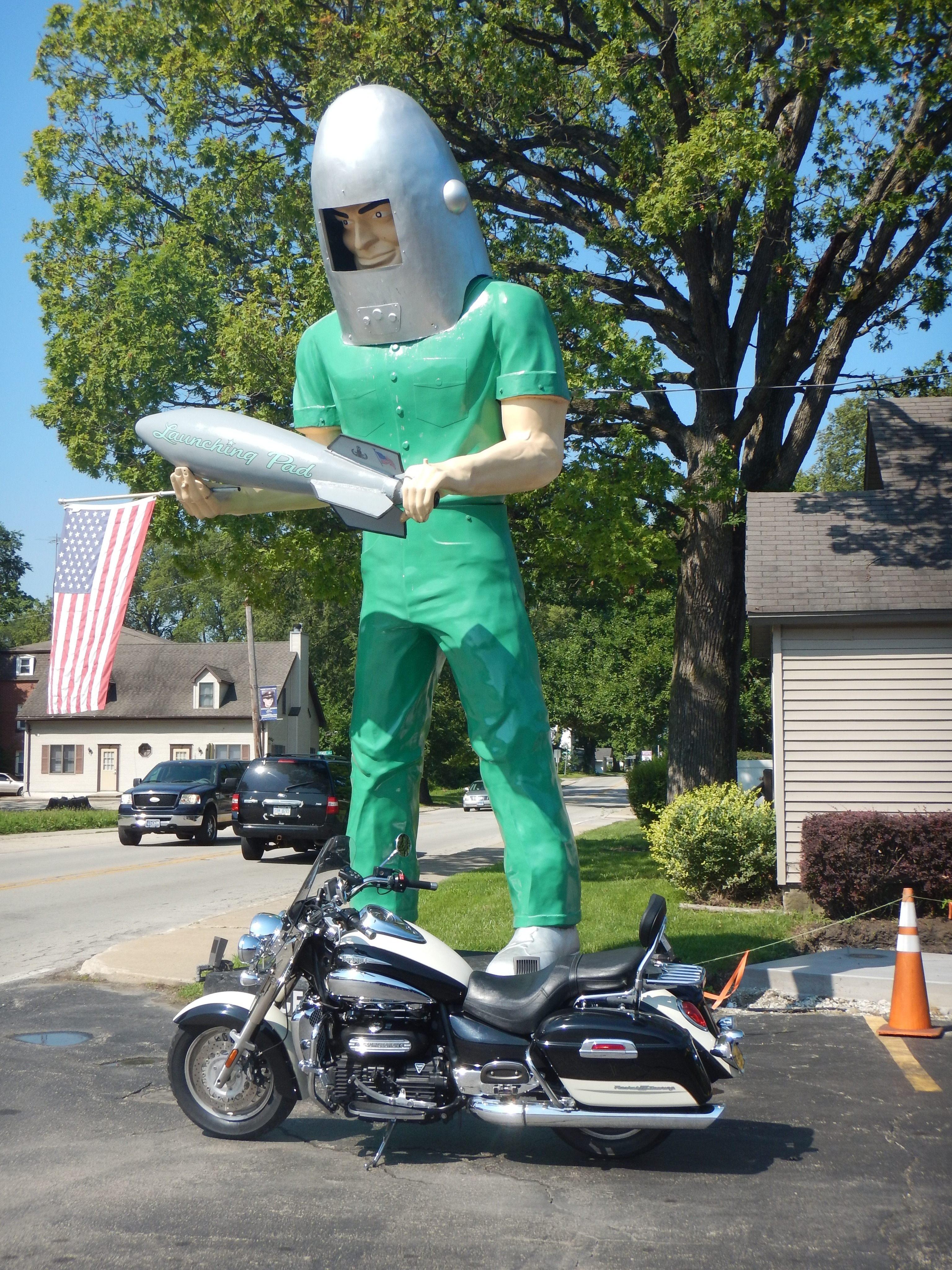
He’s not the only one on the hunt. Doug Kirby, Ken Smith, and Mike Wilkins started RoadsideAmerica.com, and they were the ones to coin the term ‘muffler man’ well before their website existed. “We started documenting them just as quirky statues in the mid-1980s—the dark ages,” Kirby says. The trio wrote two books on curious roadside attractions in the ‘80s and ‘90s, when the internet was in its infancy. “Information was spotty and often inaccurate on individual statues, even when owners tried to recall their origins.” The three started nicknaming the fiberglass giants to categorize them for publication, which in turn helped travelers catalog the figures. The fan base grew.
The trio’s work on Roadside America helped fuel one man in particular who would reinvigorate the search and help change the trajectory of muffler men.
“After seeing my first one, something just clicked,” says Joel Baker. “I was completely intrigued that there were similar-looking, 20-foot fiberglass giants all over the country with a fascinating backstory that few people knew.”
Baker connected with the Roadside America team in 2011. “I could tell he was in the grip of the fever,” says Kirby. “He was tracking down ‘cold case’ statues from 10-year-old tips on our website.”
Baker is a media producer and Youtube creator who soon thereafter started making videos of fiberglass giants. As he became more fascinated with them, he devoted himself to learning about the manufacturing techniques. He then started his own business called American Giants to restore and otherwise rescue the fiberglass statues—but his work didn’t end there. With help from the Atlanta Betterment Fund, Baker helped create the American Giants Museum along an old portion of Route 66 in Illinois. Opened in the summer of 2023, the museum has already drawn visitors from as far away as Taiwan.

The museum helped pull in another key player to build replacement parts and entirely new giants on display: Mark Cline, owner of Enchanted Castle Studios and a person some liken to Willy Wonka.
Cline is considered a master of fiberglass giants. He restores or transforms the figures into new characters for businesses, theme parks, and anyone who puts in an order. His most famous piece is Foamhenge, a replica of Stonehenge, though his work is popping up more across the country. Many of his more recent figures are made in the spirit of the old. Buck Atom is his space cowboy, stationed at Buck Atom’s Cosmic Curios on Route 66 in Tulsa. He built the cowboy wielding an ice cream cone topped with a golf ball at Cowtopia, a cow-themed minigolf course in Urbana, Virginia. Cline also owns his own theme park, Dinosaur Kingdom II.
Thanks to Cline, Baker, Roadside America, and the combined efforts of all the devoted fans, interest in muffler men has been growing. Not only have orders for muffler men been up, there’s a renewed effort to find, restore, and reuse these past icons, especially as the 100-year anniversary of Route 66 approaches in 2026.

“In recent years, [the muffler men] have regained so much popularity,” Baker adds, “to the point where so many travelers go out of their way to ‘collect them all’ when it comes to visiting them and taking pictures.” The internet and camera-equipped phones are key factors creating new throngs of muffler-man fans. Roadside America even created an app to help connect the dots for anyone interested in finding and sharing the locales of the muffler men in all their different shapes and molds (the catalog includes a vintage giant that depicts a Native American in a stereotypical way that may be considered offensive).
There is also one molding of a female fiberglass giant, nicknamed Uniroyal Gal—and she is in demand. “She’s become extremely popular,” says Cline, noting a list of businesses wanting one. He’s currently transforming one Uniroyal Gal into a pirate and making a mold of her original figure to clone her. But that’s only the tip of the fiberglass iceberg—for Cline, the revival is just beginning.
“This is my time,” Cline says. “It’s the re-emergence of the giants.”
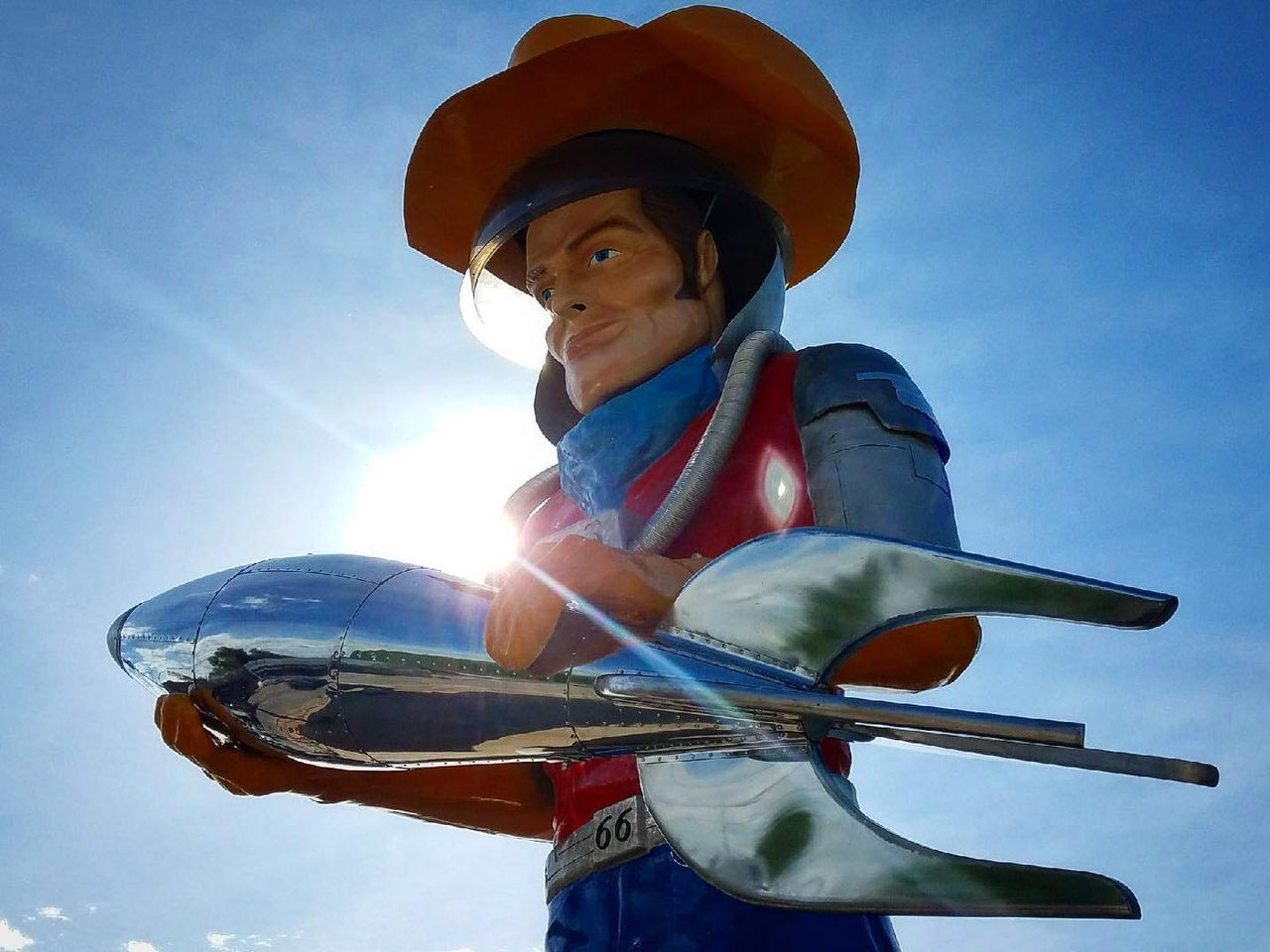

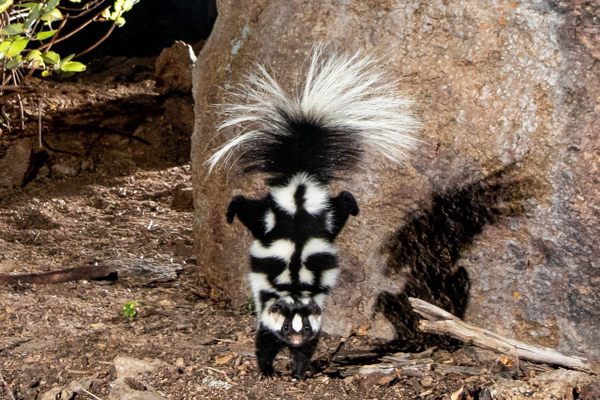
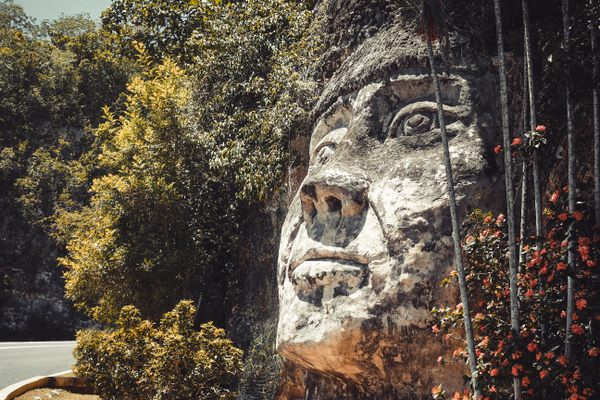

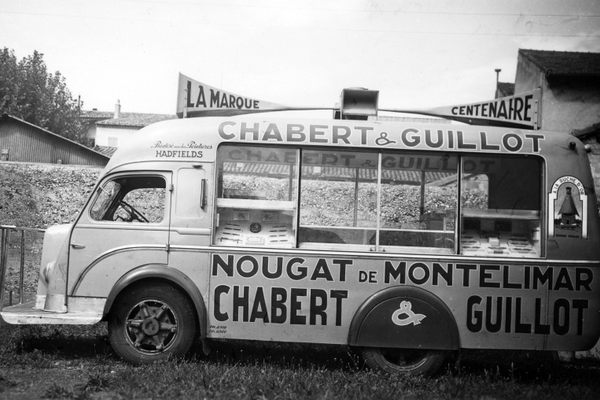






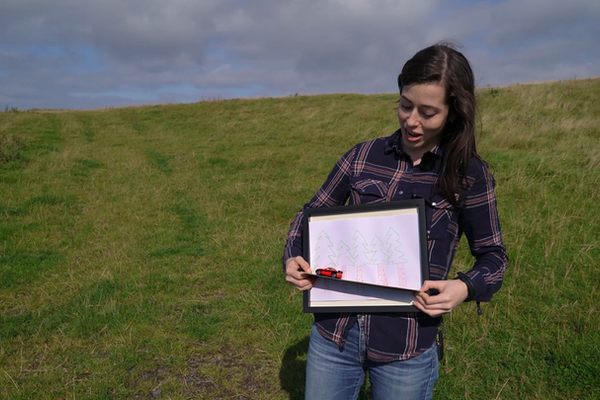



Follow us on Twitter to get the latest on the world's hidden wonders.
Like us on Facebook to get the latest on the world's hidden wonders.
Follow us on Twitter Like us on Facebook